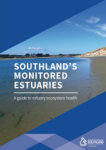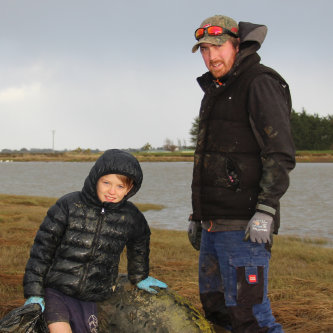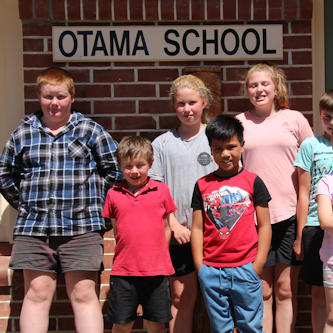Stories
Farmer who runs 'with nature'
Luke Templeton, who milks a herd of 650 cows on his 260ha property near the small coastal town of Riverton, is seeing environmental gains as extensive riparian planting and fencing projects begin to bear fruit. Read more on the NZ Herald website here.
New guide to Southland's monitored estuaries available

Environment Southland has been running a monitoring programme on estuary health since 2000, starting out on the four largest estuaries on the south coast: Waikawa Harbour, New River, Jacobs River and Toetoes estuaries. Haldane Estuary and Bluff Harbour were added by 2005, and in 2008 monitoring began in Waimatuku Estuary, Waiau Lagoon and Freshwater Estuary on Stewart Island.
The booklet provides an overview of what an estuary is, why they are important, what the problems are, and what we look for and assess as part of our monitoring programme.
... Read More.
No action is too small, it will take us all

A surge of projects and actions are taking place across Southland by individuals, groups, schools, and farmers alike to improve our waterways.
In June, Environment Southland teamed up with Sunrise Rotary Invercargill and the community to hold a river clean-up along the stop banks of the Waihōpai River. Around 100 people of all ages braved the cold and wet conditions, picking up more than 660 kg of rubbish in less than two hours.
Rubbish included 18 car tyres, countless plastic drinking straws, and a smashed ... Read More.
Piecing together the New River Estuary
About 50 experts and community members recently met with the common goal of working together for the health and wellbeing of the New River Estuary near Invercargill.
The discussion was initiated by ecologist and environmental scientist Dr Jane Kitson, Sunrise Rotary member Richard Kyte, Labour List MP Dr Liz Craig, and New Zealand Landcare Trust Southland Catchment Group project coordinator, Sarah Thorne.
Over the past 150 years, the estuary has been significantly affected by urban and rural development. This includes large areas of reclaimed land, urban discharges including treated sewage and untreated stormwate ... Read More.
From the river to the sea

The Mataura River is a recreational playground and a living classroom for the children and young people of Otama School.
Situated approximately 20 kilometres north-west of Gore, the school has been supporting students to care for, and study the Mataura River for some time now; learning invaluable lessons about the environment and life. The first school in Southland to be awarded with the EnviroSchools' Green-Gold status, Otama School successfully demonstrated that sustainability is an integral part of all of their decisions and school life.< ... Read More.
Water – it's a family thing
Southland schoolteacher Jane Milne is appreciative of the many things our local rivers and lakes give to her, though it's water's ability to connect her with family and provide a sense of place that stand out the most.
Jane's relationship with water began early, first with swimming and then through sailing with her family. During the holidays, more often than not, time is spent near or in the water.
"A lot of family holidays are around water. Whether it's gold panning along the river or walking alongside it under the shade of the trees. Water is a connection to spending time with family. I'm now passing that onto ... Read More.
Kaitiakitanga
"Kaitiakitanga – it's a responsibility, not a privilege", says Stewart Bull.
Based on the idea of humans as part of the natural world, kaitiakitanga is a worldview of environmental guardianship and protection. "It's not just a responsibility for Māori, it's for everyone; it's about community. If we can all take on this role, we can all benefit."
Stewart (Ngāi Tahu, Ngāti Māmoe, Waitaha) has been working in the community and on conservation matters in the Southland region for many years. A member of the Southland Conservation Board, a board representative on the Murihiku Kaitiaki Roopu, a member of the Whenua Hou C ... Read More.